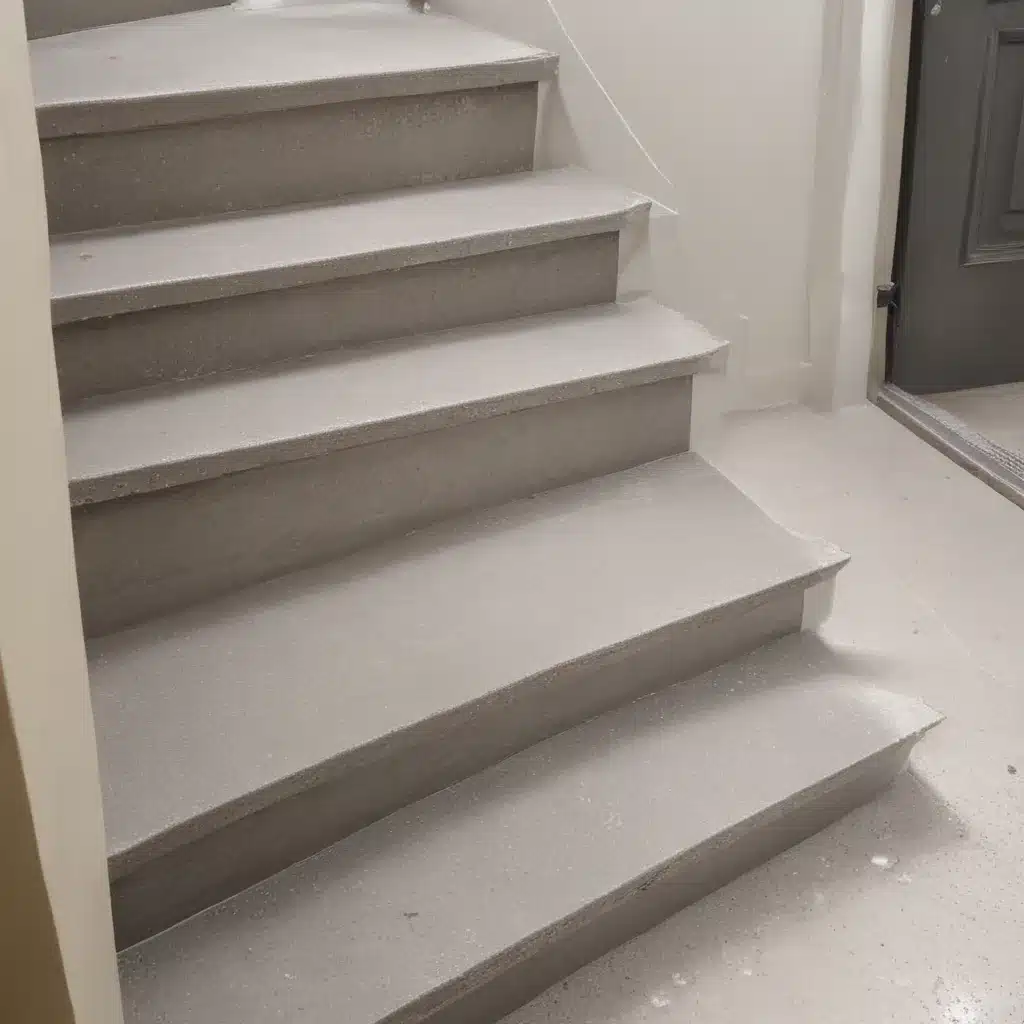
The Slippery Slope of Flooring Choices
Ah, the age-old conundrum of flooring – where function must meet form, and where one misstep (pun very much intended) can lead to a world of trouble. As the owner of a building and renovation company in Aberdeen, UK, I’ve seen my fair share of flooring fiascos, from treacherous staircases to dangerously slippery shower stalls. But fear not, my friends, for I’m here to guide you through the murky waters of non-slip flooring options, ensuring that your home or business remains a safe haven, one step at a time.
You see, the thing about flooring is that it’s not just about making things look pretty (although, let’s be honest, that’s a big part of the appeal). No, when it comes to high-traffic areas like stairs and wet zones, safety has to be the top priority. And that’s where non-slip flooring comes into play, like a superhero swooping in to save the day (or, in this case, your ankles).
Identifying the Danger Zones
Let’s start by taking a good, hard look at the areas of your home or business that are most prone to slips and falls. The usual suspects? Stairs, of course, with their treacherous steps and the ever-present risk of a misstep. But it doesn’t stop there – bathrooms, kitchens, and any other spaces where water and moisture are regular visitors can also be a minefield of slip-and-slide mayhem.
Now, I know what you’re thinking: “But I can’t just cover my entire house in bubble wrap, can I?” (Believe me, I’ve considered it.) The good news is that there are plenty of stylish and practical non-slip flooring options out there, each with its own unique set of benefits and considerations.
Evaluating Non-Slip Flooring Options
When it comes to non-slip flooring, the choices can be, well, a bit overwhelming. Do you go for tile? Vinyl? Rubber? Antique hardwood with a fancy finish? (Okay, maybe not that last one.) Let’s break down some of the most popular non-slip flooring options, shall we?
Tile Flooring
Ah, the trusty tile – a classic choice for both style and safety. Ceramic and porcelain tiles can be incredibly slip-resistant, especially when you opt for a textured or matte finish. And the best part? They’re easy to clean and maintain, making them a prime candidate for high-moisture areas like bathrooms and kitchens. Just be mindful of the grout lines, as they can sometimes pose a tripping hazard if not properly installed.
Vinyl Flooring
Vinyl is another fantastic option for non-slip surfaces, and it’s a bit more budget-friendly than tile. The key is to look for vinyl planks or sheets that have a textured or embossed surface, which can provide excellent traction, even when wet. Bonus points for vinyl’s easy-to-clean nature and its ability to mimic the look of more expensive materials, like wood or stone.
Rubber Flooring
Now, this one might not be the first thing that comes to mind, but rubber flooring is a seriously underrated choice for non-slip surfaces. Not only is it incredibly slip-resistant, but it also provides a soft, cushioned surface that can help prevent injuries from falls. Plus, it’s a great option for high-traffic areas, as it’s highly durable and easy to maintain. Just be prepared for a slightly more industrial look, which may or may not be your cup of tea.
Textured Laminate Flooring
If you’re looking for a non-slip option that still has that classic wood-like aesthetic, textured laminate flooring might be the way to go. These laminates are specifically designed with a slightly rougher surface, which helps to provide better traction, even when things get a bit wet and wild. And the best part? Laminate is generally more budget-friendly than some of the other options on this list.
Putting It All Together
Now that we’ve covered the basics of non-slip flooring, it’s time to put it all into practice. Let’s take a look at a real-life example of how I helped one of my clients, a local cafe owner in Aberdeen, tackle their slippery situation.
The cafe had a gorgeous, newly renovated bathroom, but the owner was constantly worried about the safety of their customers, especially the elderly and young patrons. They had tried a few different flooring options, but nothing seemed to do the trick – until they came to me, that is.
After carefully assessing the space and the specific needs of the cafe, I recommended a high-quality, textured vinyl flooring. Not only did it provide excellent slip resistance, but it also complemented the warm, inviting aesthetic of the rest of the bathroom. The owner was thrilled, and the cafe’s customers have been raving about the new, safer flooring ever since.
The Final Slip-Up
As you can see, choosing the right non-slip flooring for your stairs, bathrooms, and other wet areas is no easy feat. But with a bit of research, a keen eye for safety, and the help of a trusted building and renovation company (like ABC Home, if I do say so myself), you can transform your slippery surfaces into a serene, slip-free oasis.
So, what are you waiting for? Let’s get started on making your home or business a safer, more secure place, one step at a time. And who knows, maybe I’ll even throw in a few more terrible puns for good measure along the way. After all, a little levity can go a long way when you’re navigating the treacherous waters of non-slip flooring.
















